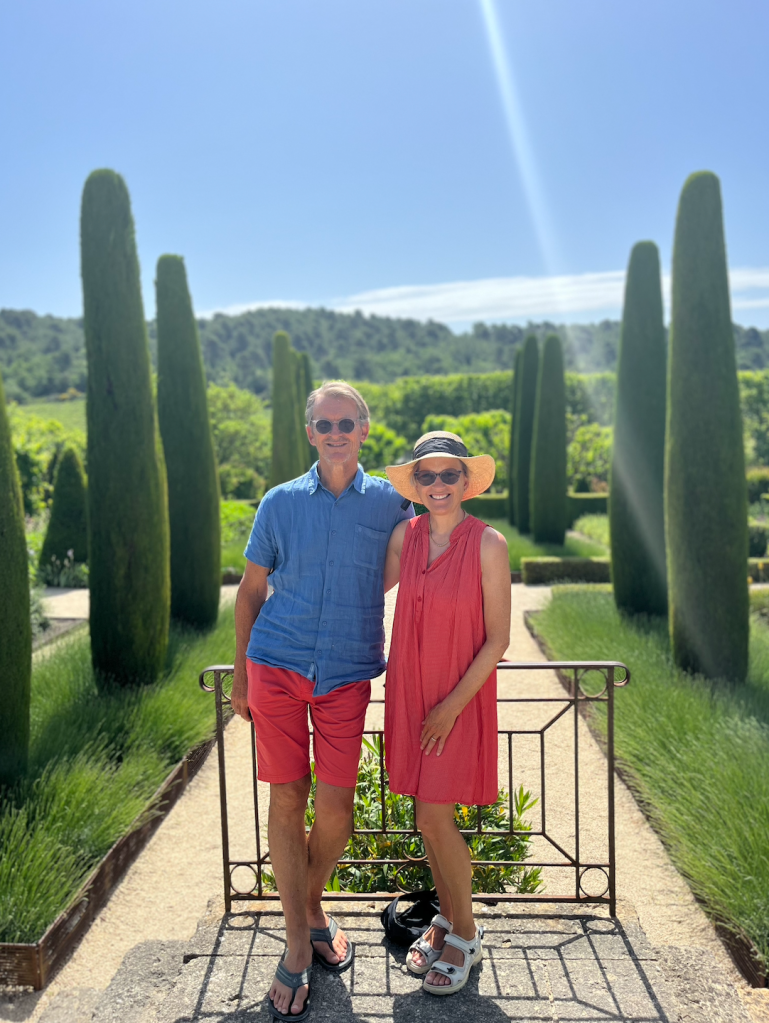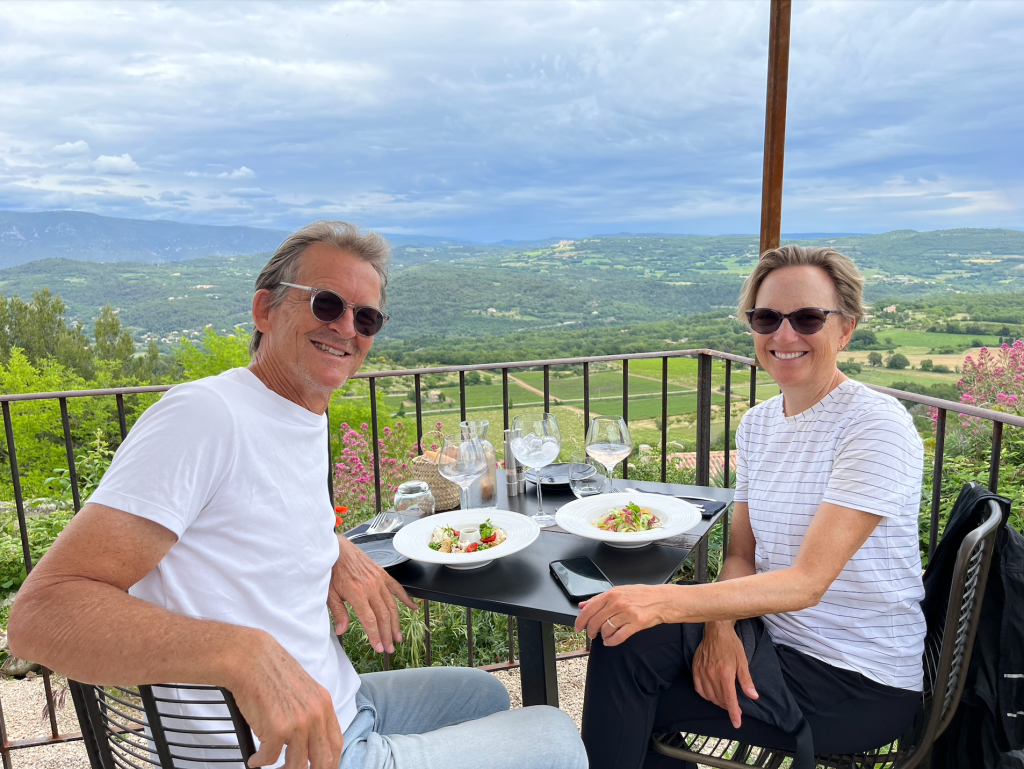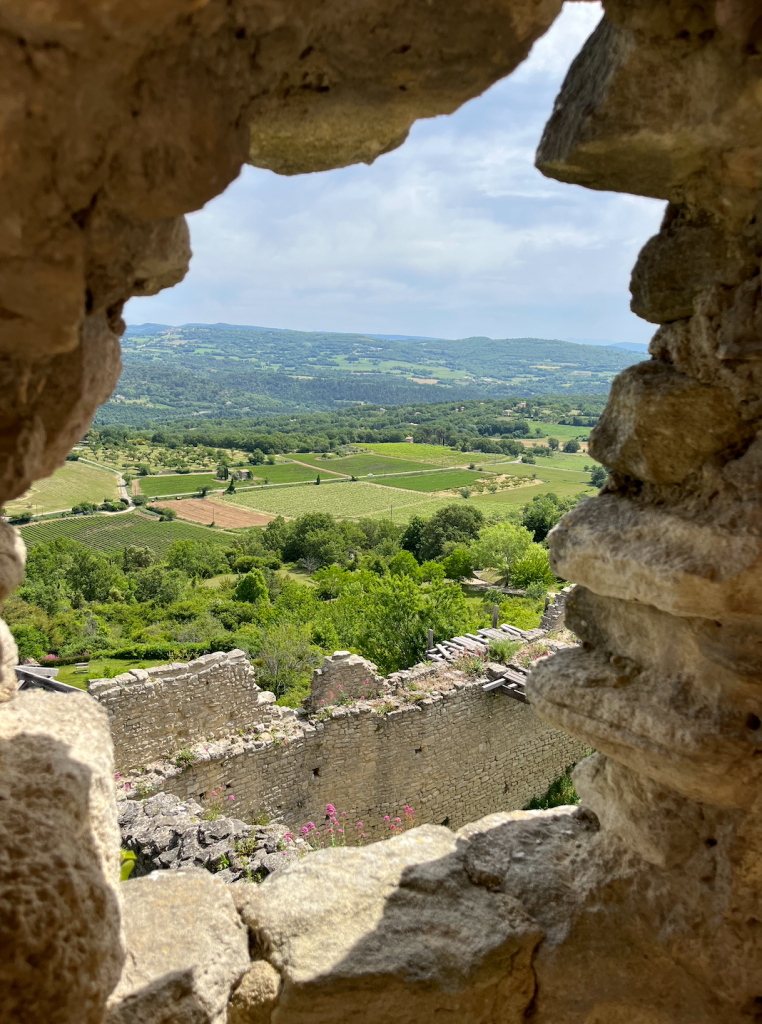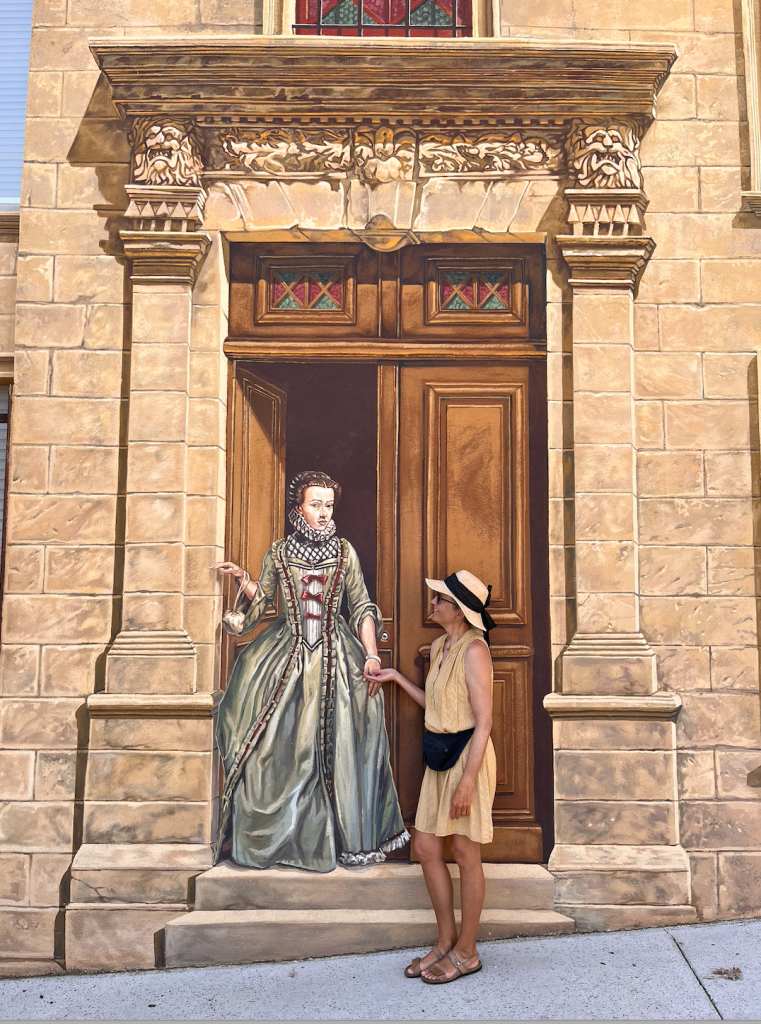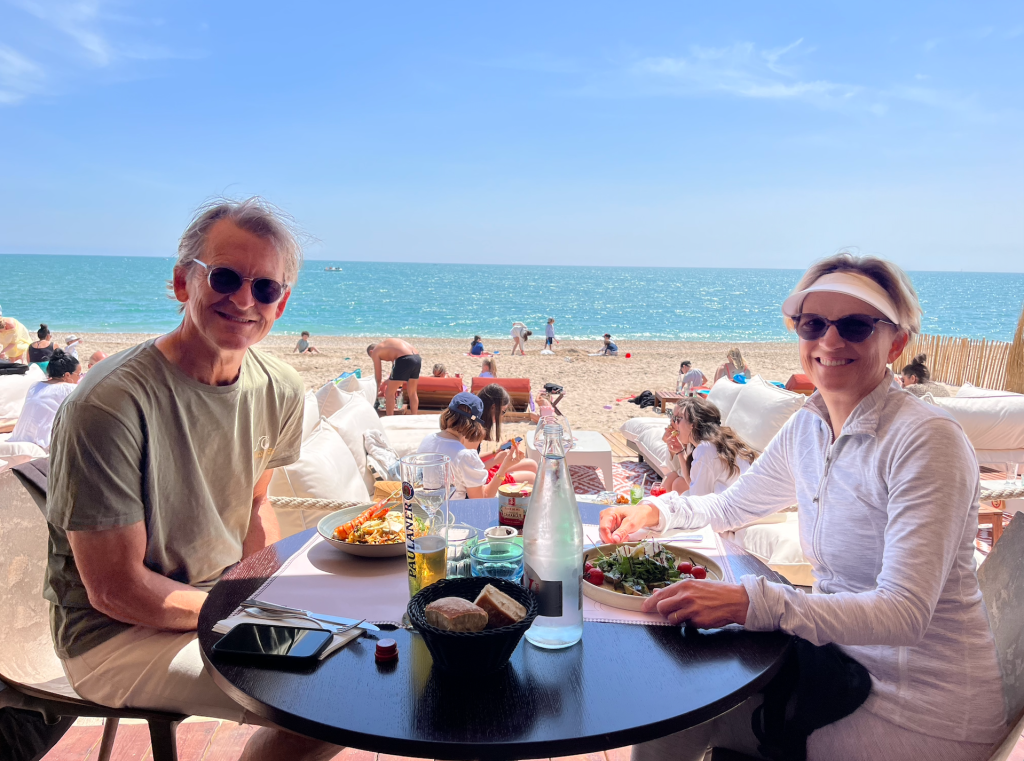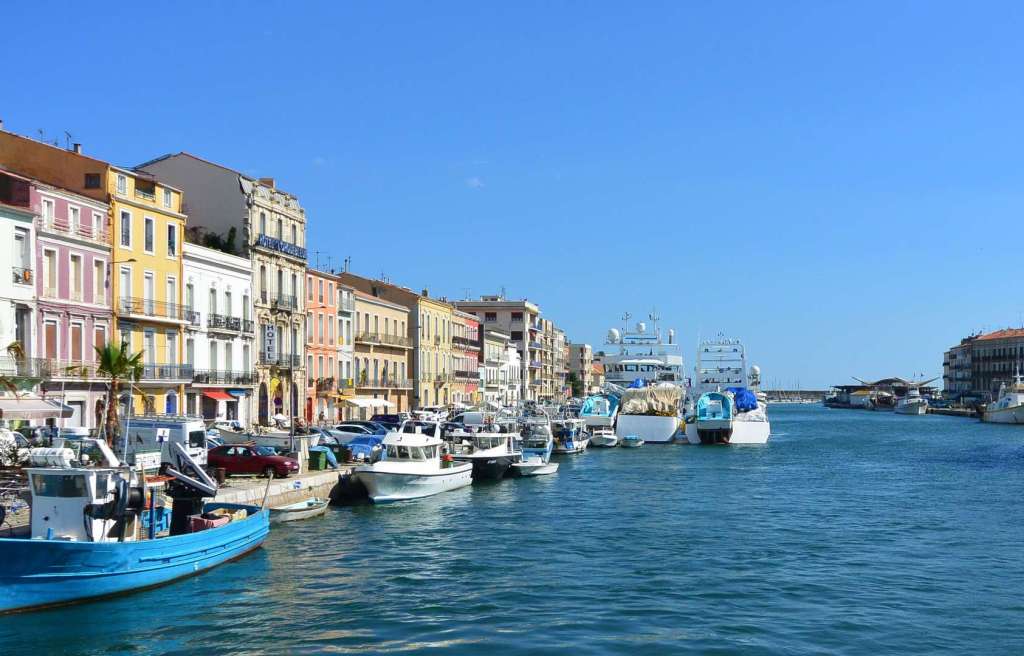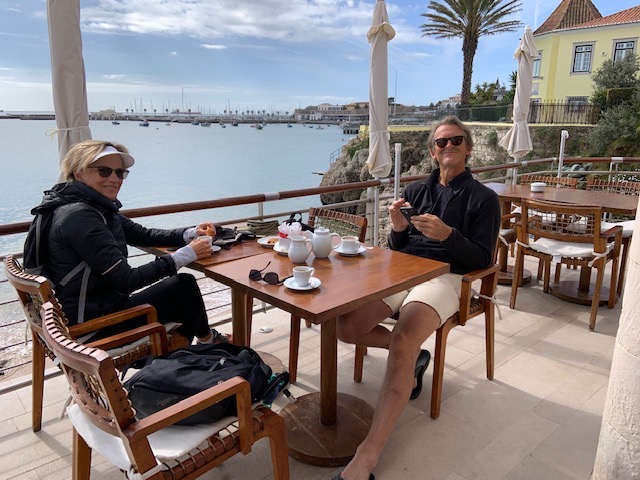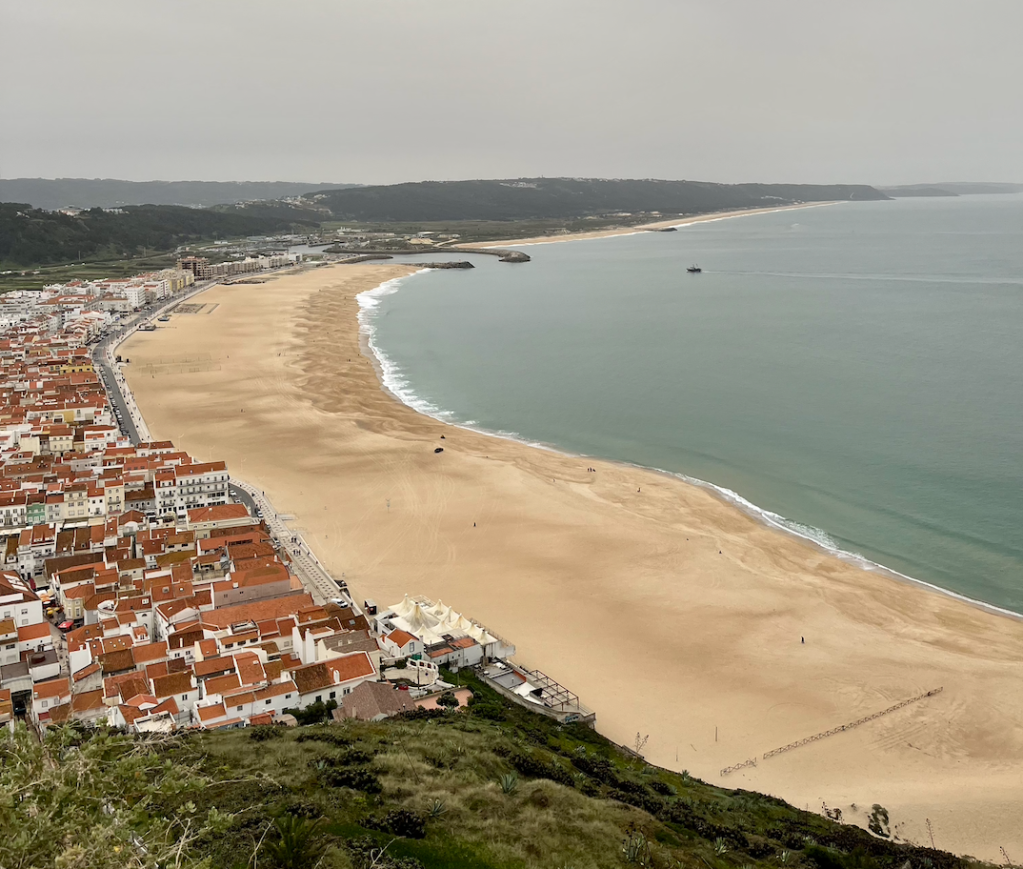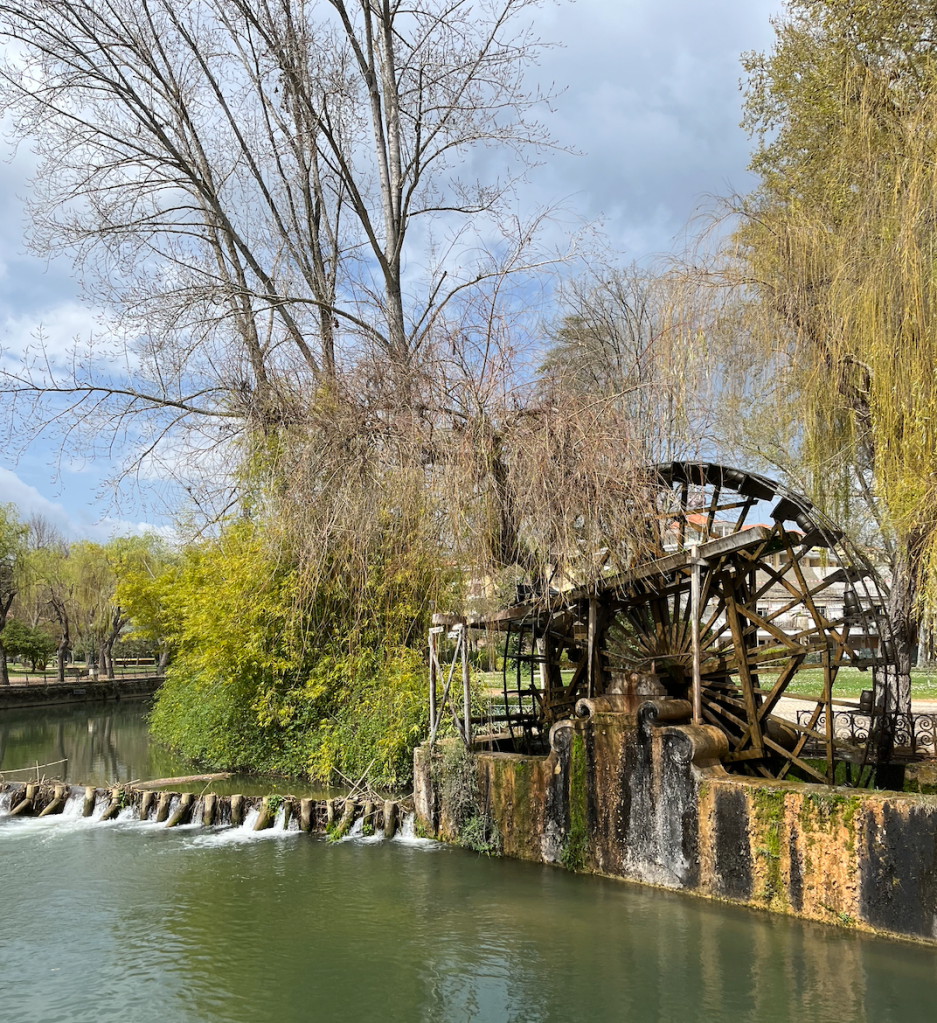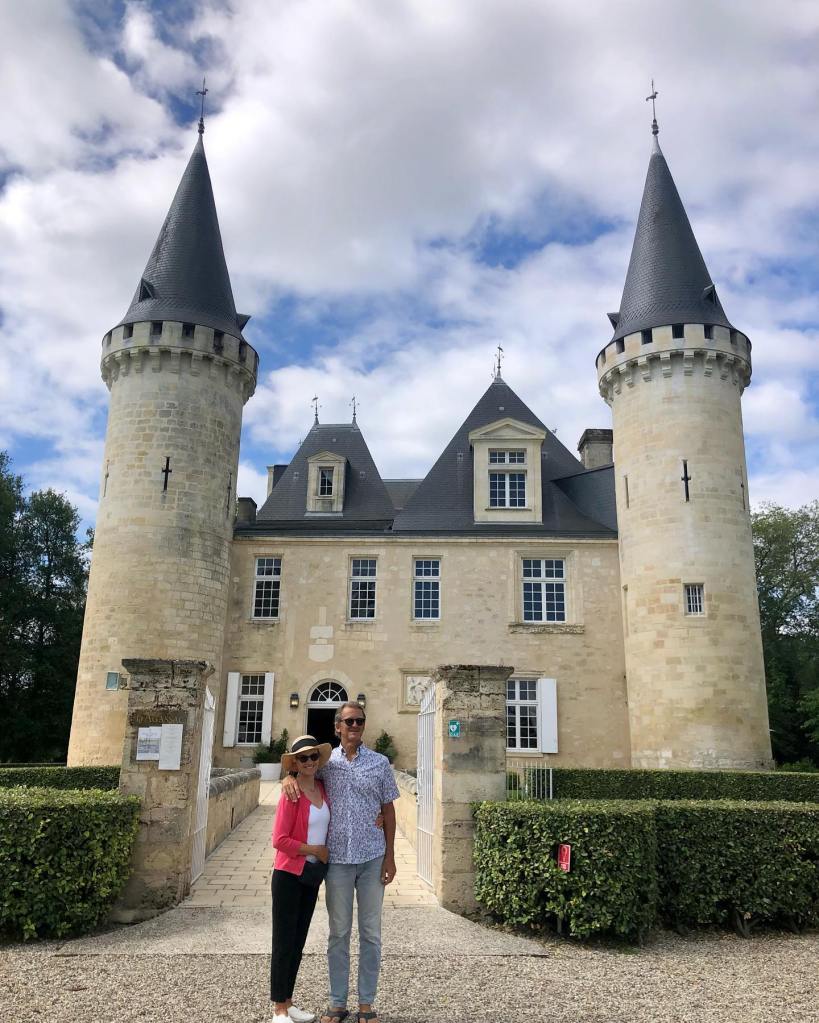
(To see more photos and highlights of our trip, please visit our Instagram account @sylstevetravels.)
We have bitter/sweet feelings as our month in Bordeaux draws to a close. Sweet because this city was a wonderful way to the end of our 6 month European tour but bitter because we realize that our journey will be over in a matter of days. Yet we are excited about the prospect of soon returning home to our family, friends, and our Toronto lives and routines.
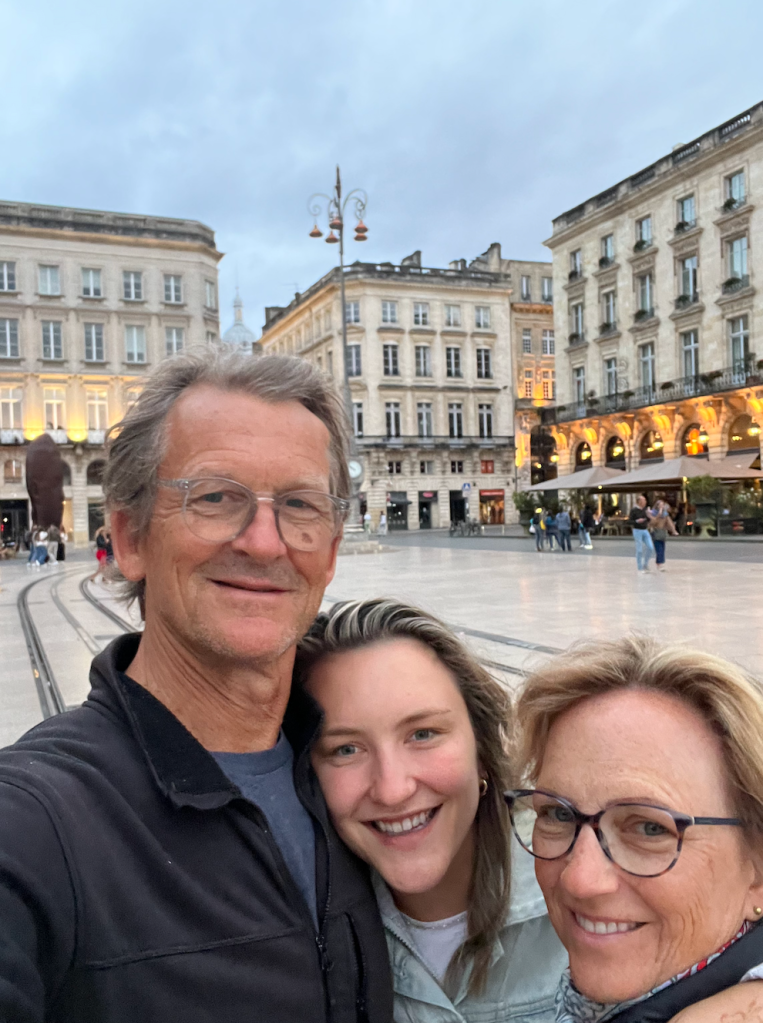

Bordeaux is the 6th largest city in France with an incredible history, architecture and energy. It is the hub of the famed wine-growing region of Bordeaux, and is known for its majestic landmarks such as La Place de la Bourse, Le Miroir d’Eau, La Place des Quinconces, La Cathédrale Saint-André, Le Grand-Théâtre de Bordeaux and La Garonne river which winds through the city. Click here for a detailed tourist map of the city (part screenshot below).
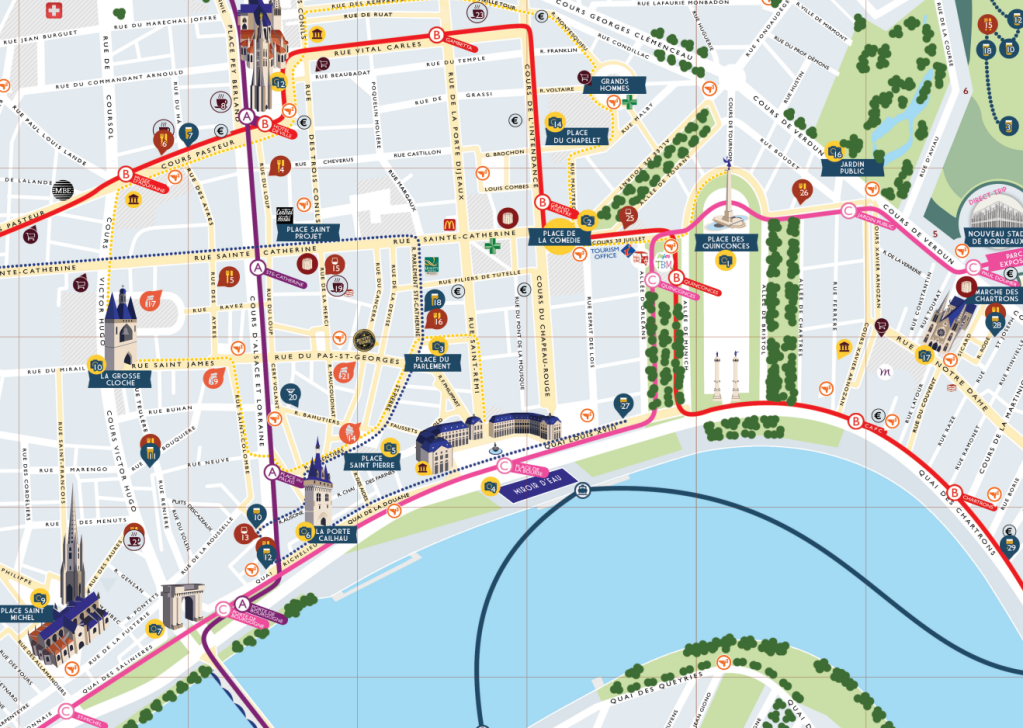
When we arrived at the Bordeaux airport the line-up for taxis was huge (Uber didn’t work for us) so we ended up taking the bus Liane 1 which brought us almost directly to our Airbnb near La Place Gambetta (Note: You can determine bus/tram/train routes with Google maps by clicking the train icon).

We didn’t know how to buy tickets so the bus driver shrugged and let us on. As with most public transportation in France, there seems to be an honour system where you are supposed to buy and tap in with your ticket. Every now and then an official might come on board and ask for your ticket and if you don’t have one you will be heavily fined.
(Side note: This, in fact, happened to us later in Bordeaux when we tried to use train tickets a day earlier than intended. We were fiercely reprimanded by the train conductor who demanded that we pay him 50eu on the spot. We told him we had no credit cards 🙂 so he said to pay in cash (!). We said we didn’t have cash either so he asked for our passports. When we told him we didn’t have them on us he said the police will be waiting for us when we get off the train. Of course, they weren’t, he was just trying to scare us. No one was waiting for us and we bolted away on our bikes as fast as we could).
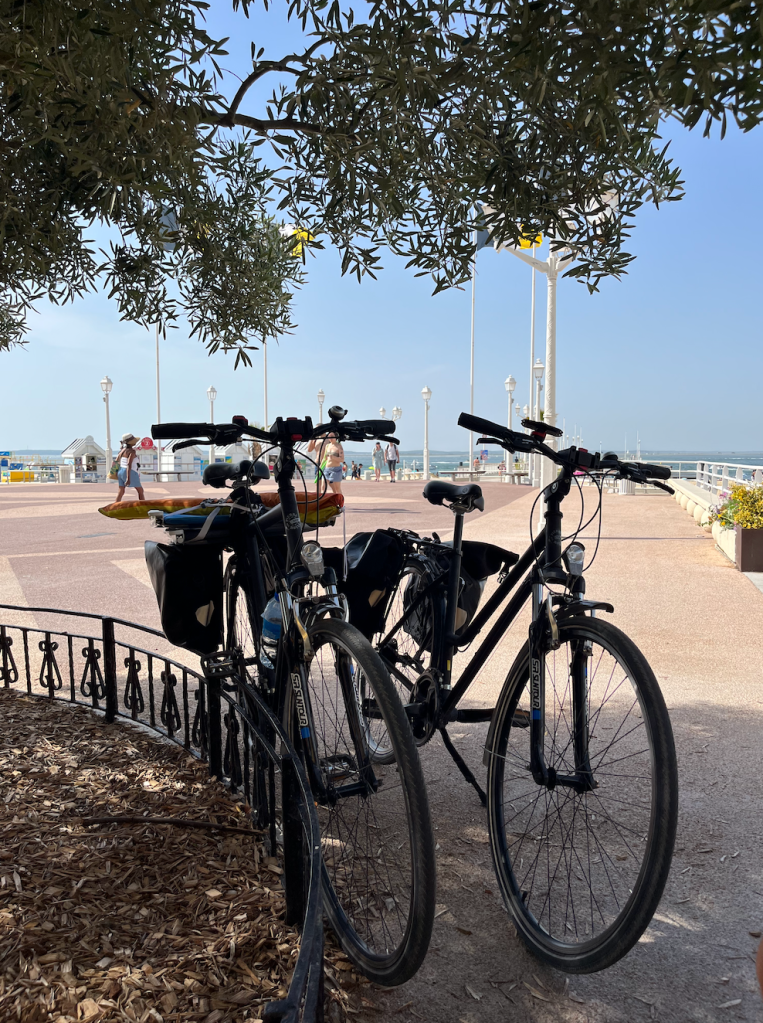
The day after we arrived in Bordeaux we rented bikes from Pierre qui Roule which was right around the corner from our Airbnb. They are super friendly and gave us a great price for the month: 5 euros/day. We figured the best place to start exploring the city would be along the Garonne river so off we went. We cycled all along the west side of the Garonne, crossed the Pont Jacques Chaban Delmas, then cycled on the east side of the river to Pont Pierre, a beautiful pedestrian-only stone bridge. We were very happy to have bikes because Bordeaux is a large city!
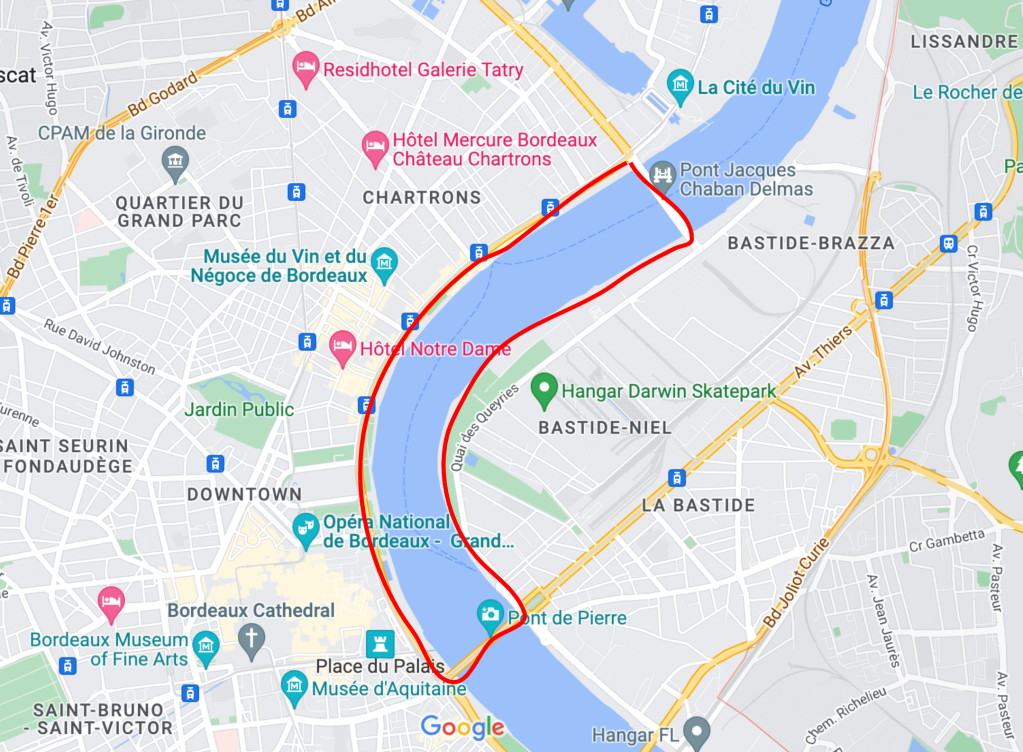
We were also thrilled to discover that Bordeaux is very biker-friendly with many bike lanes around the city. In general drivers are respectful towards bikers and we feel very safe cycling everywhere. However, at this time of year the roads and bike paths are often heavily congested with people and cars (especially in the afternoon and evenings) so cycling becomes a bit of an obstacle course as you weave around trying to avoid hitting people and things.
Just a heads-up if you ever plan to take your bikes on a train (which we did often): the ride to the train station (Gare St Jean) from the centre of Bordeaux is not very pleasant because Google maps will try to take you on a very busy street. Steve eventually found us a route winding through quieter streets which was way better. Another good option is to ride along the bike path next to La Garonne then up to La Gare St Jean.

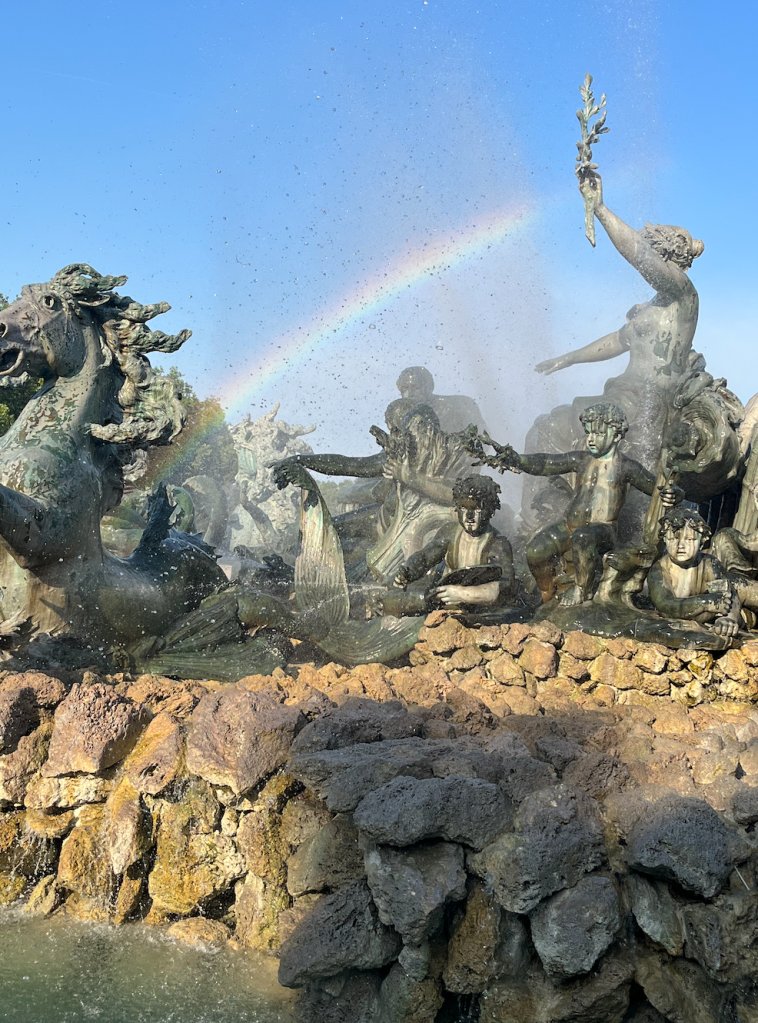

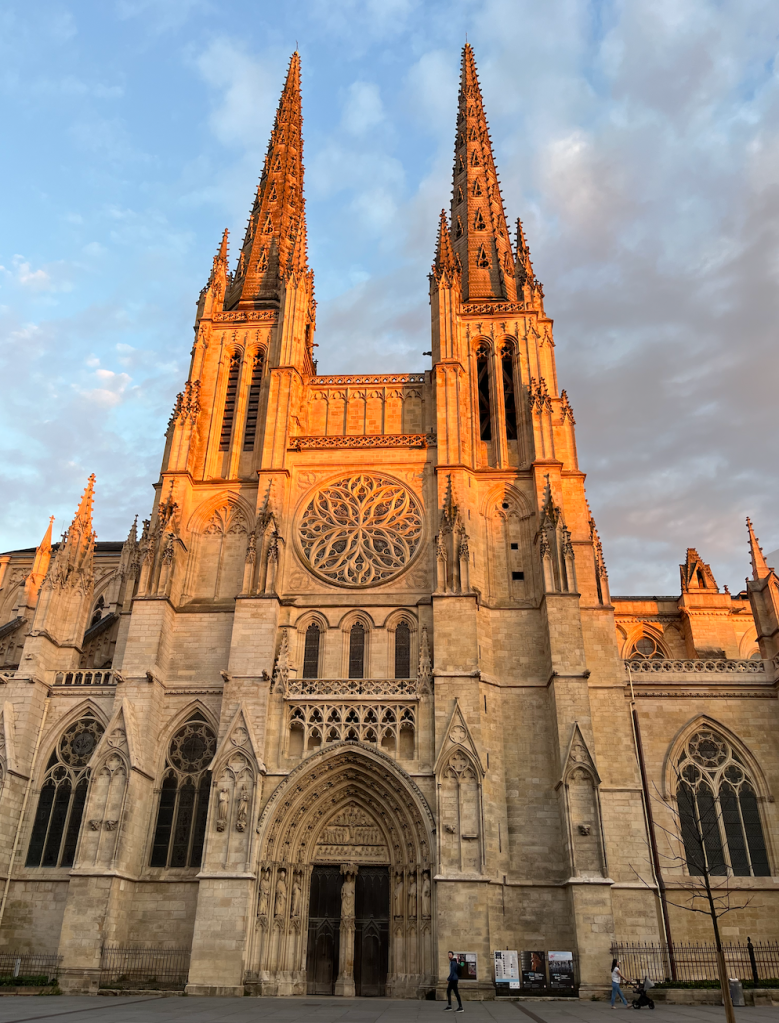

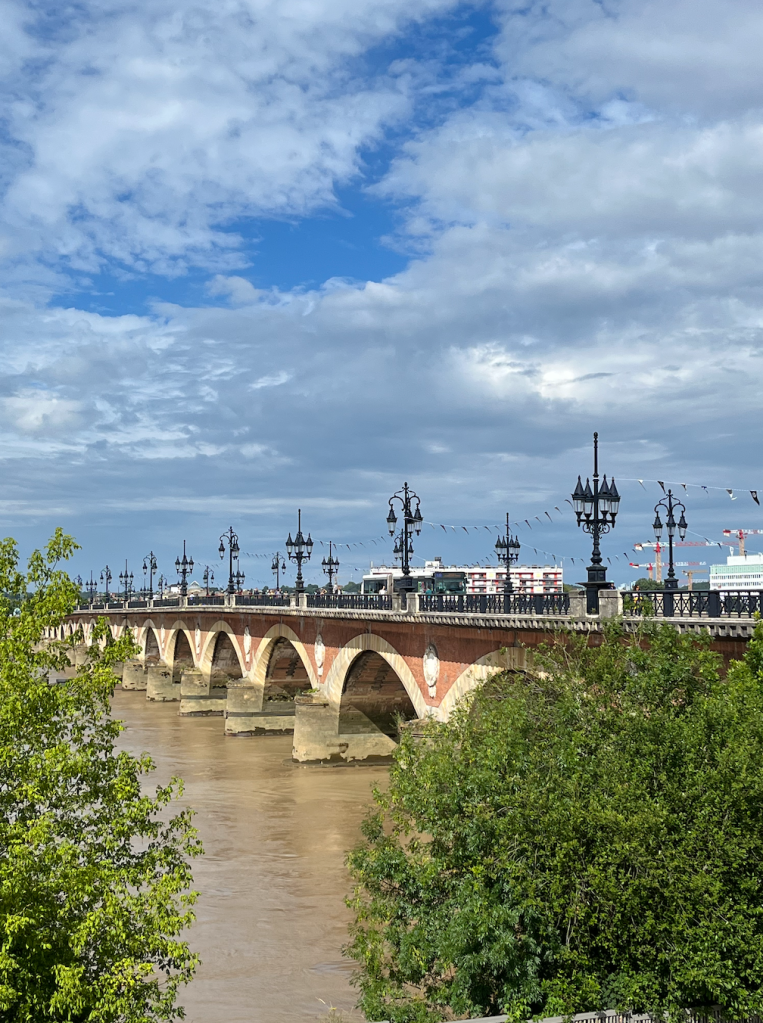


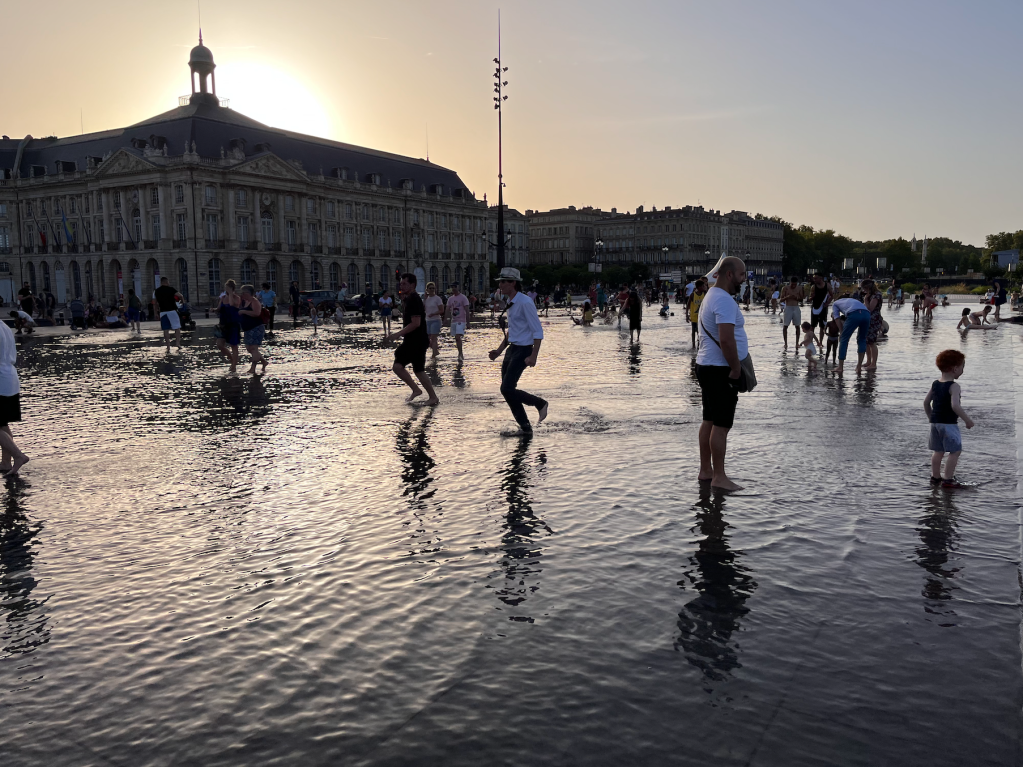

At the beginning, Bordeaux was a bit of an adjustment for us, coming straight from the peaceful Provençal countryside into the busy, energetic mass of humanity in Bordeaux. While we have a great Airbnb in a pedestrian-only zone with tons of bars, restaurants and cafés, at times we have found the volume of tourists to be a bit overwhelming. The hugely popular annual Bordeaux Wine Week last week was incredible but it made the city even busier. The week before that we had a severe heat 5-day wave with temperatures rising to 42C (thankfully, our Airbnb has AC). Despite these challenges, we have grown to love and appreciate Bordeaux for its energy, vibrant food scene, and of course, for its famous wines. When our daughter Lauren arrived mid-June all the way from New Zealand to visit us we were thrilled to show her our favourite spots and to explore new ones with her.

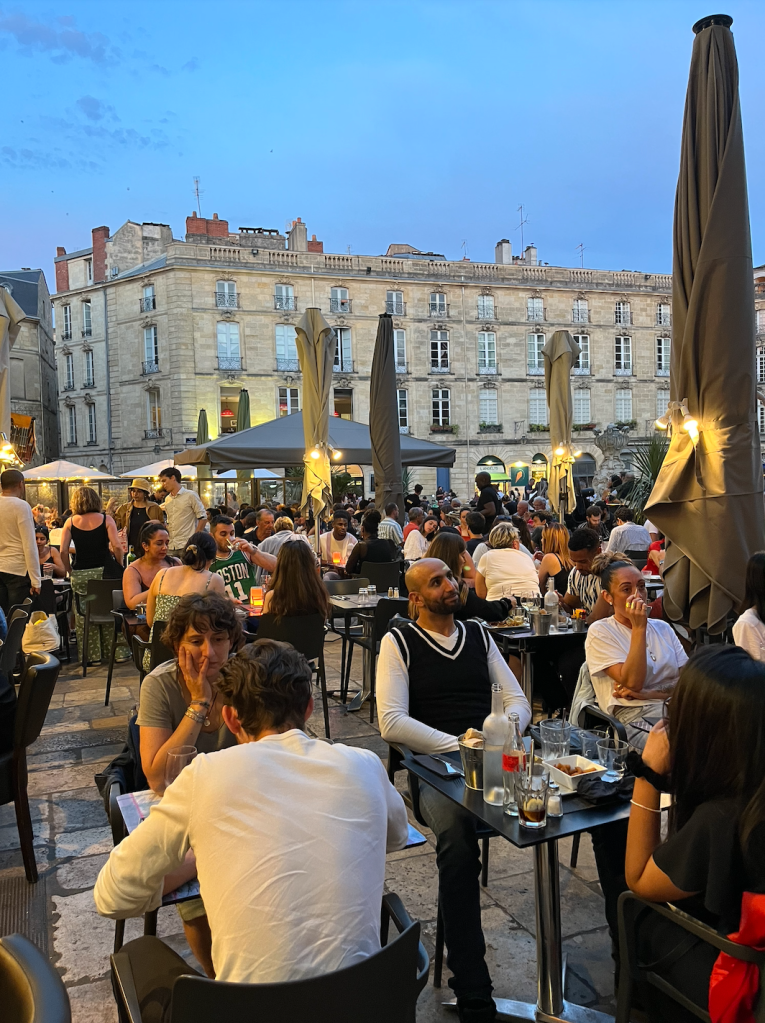
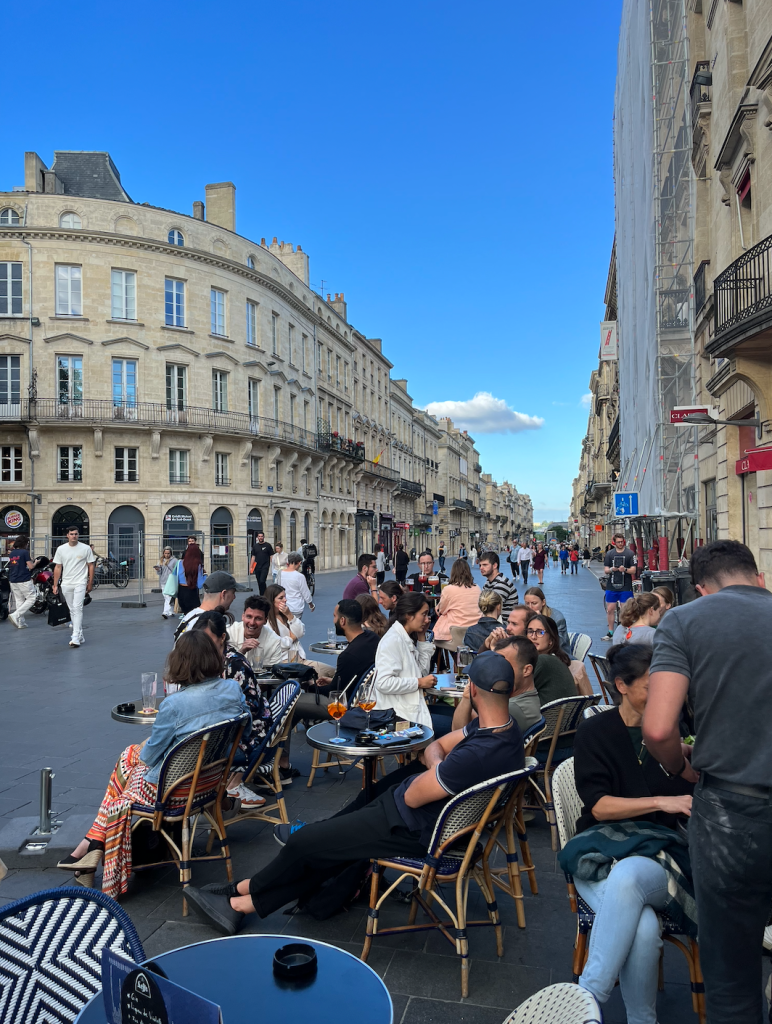


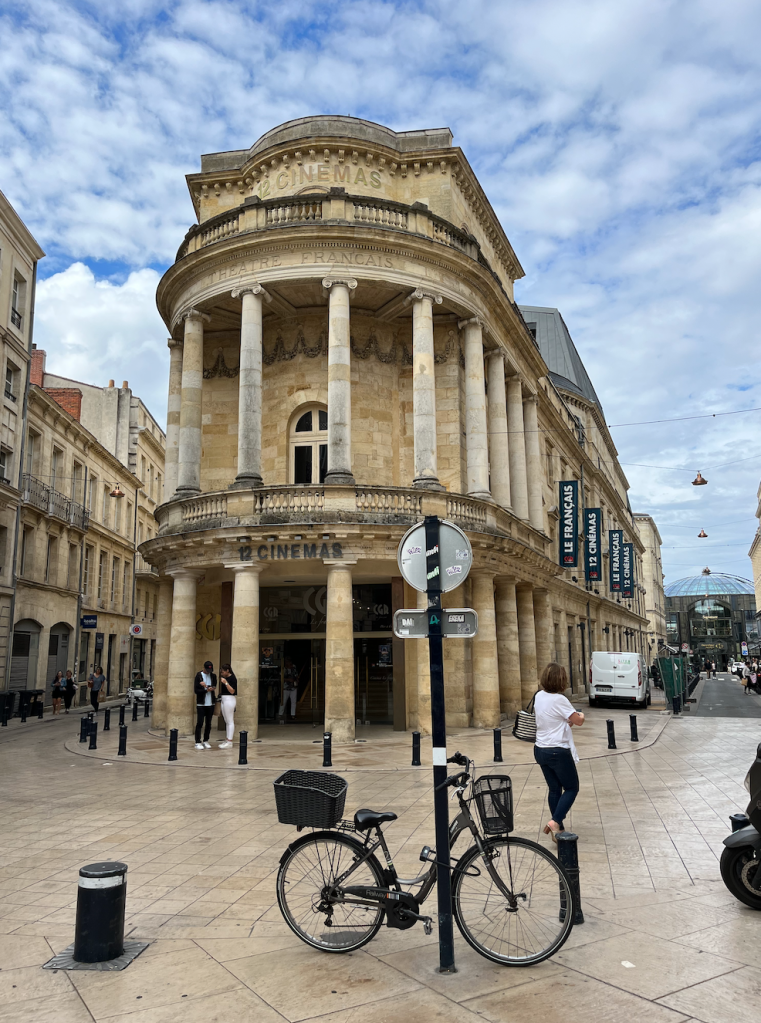





Favourite squares and pedestrian-only streets
When you explore the streets of Bordeaux you will discover your own favourite spots and pedestrian-only streets. Three of the bigger pedestrian-only streets are Rue de la Porte Dijeaux (Rue St. Remy), Rue St Catherine and Rue de L’Intendence but there are many others (see map below, thin green lines). Here is a list of our favourite squares which are filled with cafés and restaurants and teeming with people every day. (Click here for the full map.)

- Place St. Pierre
- Place du Parliament
- Cours de l’Intendence
- Place du Marché des Chartrons
- Place du Palais
- Place Fernand Lafargue
- Place de la Comédie
- Place Camille Jullian
- Place Pey-Berland (Cathédrale Saint-André. Must-do: climb the Pey-Berland tower for an incredible view of the city, 6eu/pp.)
- Place des Grands Hommes
Must-see landmarks
La Place de la Bourse, Le Miroir d’Eau, La Place des Quinconces, La Cathédrale Saint-André, Le Grand-Théâtre de Bordeaux, La Garonne, La Porte Cailhau, La Grosse Cloche, Le Pont de Pierre, La Tour Pey-Beyland, are just a few of the important landmarks that you should try to see if you come to Bordeaux. Click here for a terrific map of these land marks and many more.
La Rue Notre-Dame is a charming, must-see street in Chartrons with many shops and restaurants.

Le Jardin Public is my favourite spot in all of Bordeaux. It is a large, beautiful, gardened park and a great place to unwind from the hectic city and crowds. L’Orangerie is a restaurant/café/bar in the park where Steve and I (and later, Lauren) spent many a cocktail hour with a beer, Aperol Spritz or a glass of rosé.

La Cité du Vin
La Cité du Vin is a wine museum that has to be visited if you are in Bordeaux. It is a really interesting, interactive experience looking at every aspect of making and drinking wine. The museum touches all of the wine regions of the world, but focuses mostly on Bordeaux wines. There are over 8500 wine producers in Bordeaux alone across several different “Appellations” or regions. You learn all about the history of wine making, how the different varieties, terroirs, and aging/blending processes contributes to all of those wonderful scents and tastes. Plan to spend 2 or 3 hours there including a wine tasting on the top floor with a view of the entire city. Spectacular.



Accommodations
If you are planning to visit Bordeaux during the warmer months (May – September), be sure to find an accommodation with air conditioning. It gets VERY HOT here, in fact, Steve and I have never experienced a heat wave like the one we encountered here: 42C for 5 days in a row. We would have died if our Airbnb didn’t have AC. Very few places have AC in Bordeaux so be prepared to search for quite a while (or, save your time and energy, and just book the Airbnb we stayed at which we highly recommend).

Also, try to avoid booking a place in the south end of the city (near the train station) as it is a pretty sketchy area. Try to find a place in a pedestrian-only zone (like ours) to avoid hearing cars and scooters all day long. You can tell where the high-traffic streets are by going to Google Maps > Layers > Traffic.
We love the Chartrons neighbourhood (close to Rue Notre Dame and Le Jardin Public) and this is where we will probably look for accommodation the next time we come to Bordeaux. Our Airbnb was great but too centrally located, in a very busy zone with lots of tourists, likely because we were there during high tourist season.
Markets
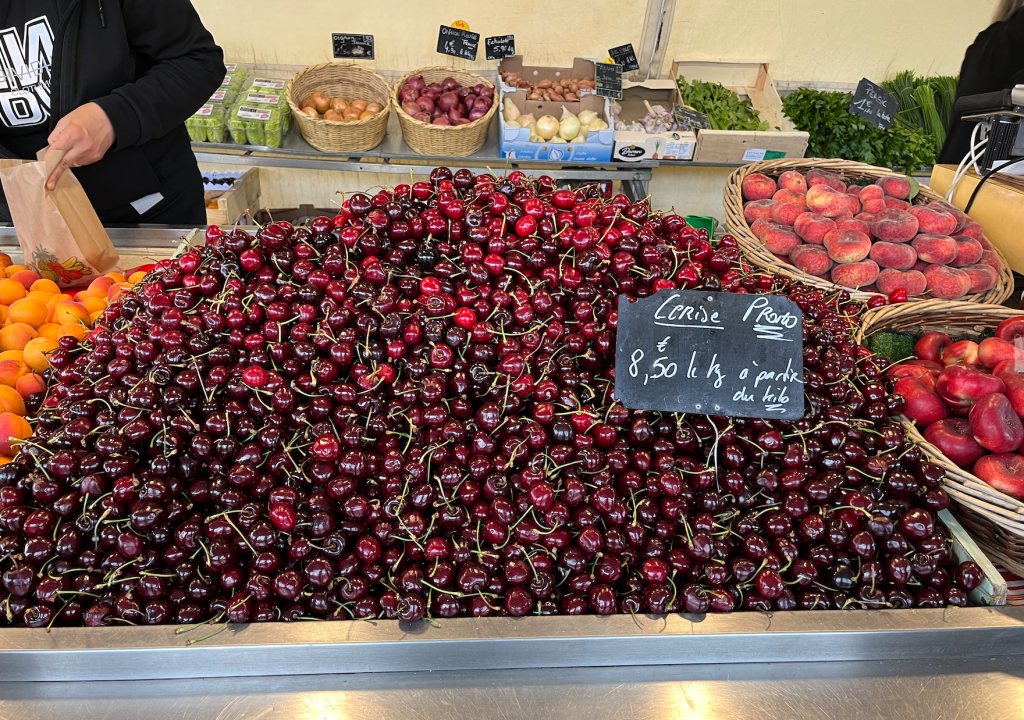

We were somewhat disappointed with the market and les halles options in Bordeaux. In Montpellier there were many more fresh produce markets where we got to know many of the sellers and shopped every day. In Bordeaux there were only a few markets and Halles that we really liked.
- Marché des Quais des Chartrons: This is our favourite market in Bordeaux which takes place every Sunday morning, right by the river. There are a lot of produce and specialty foods stands (fish, meat, cheese, etc), including a couple of small restaurants where you can eat fresh Bay of Arcachon oysters (Note: This market is not to be confused with Le Marché de Chartrons, which is a very small, unimpressive market, Tues – Sat. on Rue Sicard in Chartrons).
- Place Meynard (Basilique St. Michel). Very hectic produce market Fridays and great flea market on Sundays. Get there really early (before 9) to avoid the crowds.
- Marché Capucins is the biggest market in Bordeaux, open 5:30am – 2pm every day but Monday. It’s is quite far from our Airbnb so we did not go too often.
- Les Halles Bacalan: Located at the north end of the city, across from La Cité du Vin, this is a closed hall with small restaurants, bars, and food shops. There is a nice outdoor sitting area as well. Highly recommended. Closed Mondays and Tuesdays.
- Les Halles de Talence: A little out-of-the way but a very nice, smaller version of Les Halles Bacalan. Visit on Wednesday when there is also an open-air market. Combine a trip here with a visit to le Château de Peixatto and le Château de Thouars.
For quick groceries, there are many Carrefours (small neighbourhood grocery stores) scattered around Bordeaux. There are also humungous super grocery stores called Auchan which has many Bordeaux locations (click here for map).
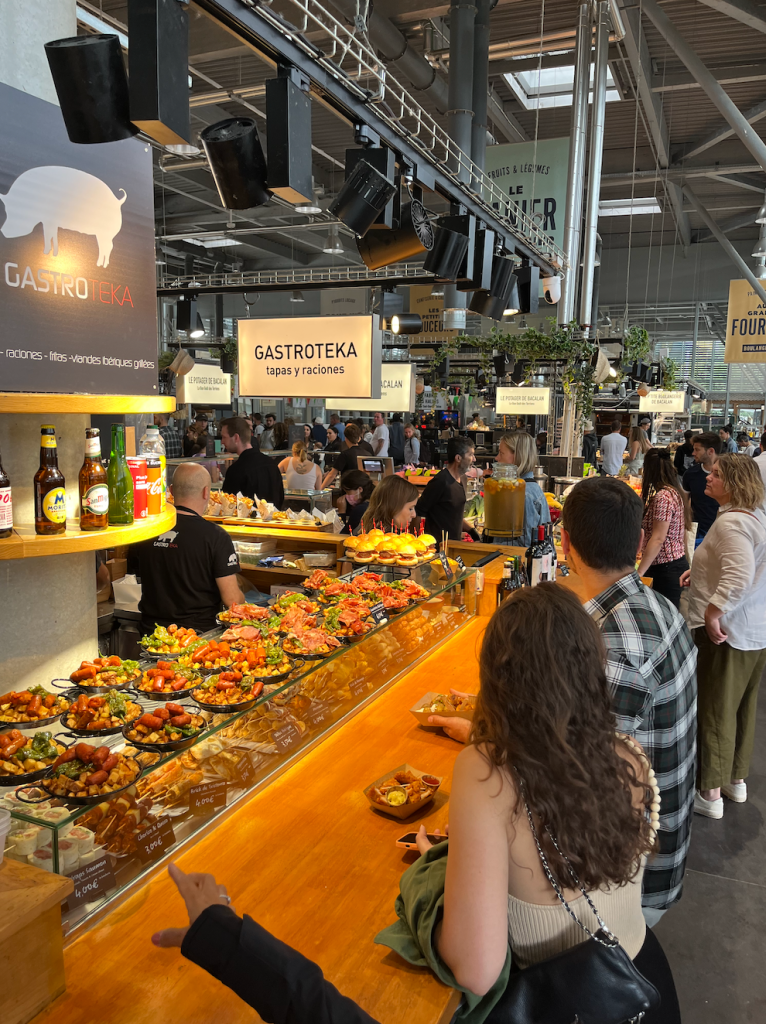





Best coffee and croissants
Since arriving in France, Steve and I have taken very seriously our search for the perfect coffee and croissant to start the day off right. We look for good coffee spots by searching “Torréfacteur near me” on Google, which is a coffee roaster. Otherwise, the coffee in Bordeaux in many cafés might be made by pushing buttons on a big machine (as opposed to heating up the milk by hand with a steam frother) and often did not meet our standards for flavour or strength (!). Ask for a Flat White or Café Crème (a “Latte” has more milk).

The perfect croissant has to be baked fresh with a crispy, dark-golden, flaky shell and a soft centre that stretches slightly when pulled apart.
Three cafés near our Airbnb matched our criteria for perfect coffee and croissants:
- SIP Coffee Bar: Cozy indoor café.
- Books and Coffee: Beautiful indoor/outdoor location, right in front of La Grosse Cloche.
- Le Café Piha: Cute café with indoor and outdoor seating.
Best restaurants
Not surprisingly, we have had some delicious meals in Bordeaux. We chose reasonably priced restaurants that rated highly on Google Maps (4.6+) with an interesting menu, outdoor seating and an energetic vibe. As always in France, it’s always a good idea to make a reservation by phone or online if possible. Note: Not all restaurants are good so be thorough with your research. We only had one disappointing meal the entire month at restaurant called A Cantina despite a high rating. Turns out it is more of a pub with a focus on great cocktails and wines, with pretty average pub-like food.



- Les Vaillant Père et Fils: Our favourite restaurant, amazing organic food in a lively square.
- Restaurant Arcada: We had an incredible meal here, one of the best ever in France.
- Restaurant Loulou: Creative and fresh food with tables tucked into the alcove of a beautiful church.
- Frida’s: Cute indoor restaurant with nice vibe.
- La Petite Maison de Pierre: Cute, family-owned restaurant in bustling Place Saint-Pierre.
- Osteria Palatino: Great spot for pizza and salads on a lively street terrace.
- Karl’s: Nice place to sit for a drink and bite to eat and to people-watch in La Place du Parliament.
- Books and Coffee: Our go-to place for great coffee and brunch.
- Les Halles de Bacalan: This is an upscale food court with lots of great restaurants to choose from. We loved Les Requins Marteaux for really fresh seafood dishes.
- Le Bistrot Grand Louis (Mérignac): We had a really nice meal here, invited by friends of ours who live in Mérignac.
- La Guinguette Chez Alriq is a cool, relaxed, low-key bar on the other side of La Garonne with a beautiful view of Bordeaux. No food, just drinks.










Canelés
Canelés are a small pastry with a soft and tender custard-rum center and a dark, thick caramelized crust, classically created by brushing the mould with melted beeswax. They are a staple in Bordeaux, available everywhere in every size. I loved them right away but Steve never did acquire a taste for them. Try one at La Toque Cuivrée (many locations).

We were very lucky to have been in Bordeaux during the annual Bordeaux Wine Week: 7 days of festivities along La Garonne celebrating Bordeaux wine. 21 euros (app. $30CAD) buys you an entrance ticket to all of the displays, and 10 wine tastings (good size pours too!). It was one of the highlights of our trip to Bordeaux. We participated in several amazing workshops such as the steps to proper wine tasting; pairing wines with foods; how and why wines are blended; and a fantastic cooking demonstration with a Parisian chef who matched her creations to specific Bordeaux wines. There were many tasty food stations with all the best of french cuisine to be savoured. It was a really great event and a wonderful way to showcase French wine, food and culture.




Day trips from Bordeaux:
- Arcachon

Arcachon is a quaint seaside town on the Atlantic coast, 50 minutes away from Bordeaux. You can drive but car rentals are very expensive, so it’s better to take a train (plus you can bring bikes on the train which is a real bonus). It has a wonderful indoor and outdoor market in Place des Marquises which is open every day 7.30 a.m. to 1.30 p.m. in high season (click here for more info on the markets). There is a lovely beach lined with restaurants and a very nice car-free boardwalk.
We strongly recommend combining a trip to Arcachon with a 30-minute ferry ride to Cap-Ferret (15eu return, 26eu with bike), an area renowned for its gorgeous, empty, pristine beaches (on the west side) and its plentiful oyster shacks scattered along the east side. You can buy ferry tickets online or in person at Place Thiers in Archachon the day of your trip (No need to buy tickets ahead of time since they just add boats to accommodate visitors). During the boat ride you will see the famous “Dune de Pilat” (the largest dune in Europe) on the coast just south of Arcachon.

2. Cap-Ferret
Cap-Ferret, a small town on the Lège Cap-Ferret peninsula, is where the ferry arrives from Arcachon (on La jetée Balisaire). The temperature is much cooler here than in Bordeaux or Arcachon because of the Atlantic winds (especially on the west side of the peninsula). This is where we escaped to every day during the 5-day “canicule” (heat-wave) in Bordeaux and it was a life-saver despite the long trip there and back (50 minute train + 30 minute boat ride). We felt it was well worth the trip except for the last day when the wind died and we got scorched on beach.
Cap-Ferret is a tourist town with many restaurants, oyster shacks and vacation homes. While there are many roads to cycle on in Cap-Ferret, unfortunately, there is no road that goes directly along the water so cycling on the peninsula is not all that interesting. However, the markets, restaurants and beaches are incredible to visit so it is well worth the visit.
Our favourite place to eat fresh oysters in Cap-Ferret is Chez Boulan and for “Moules et frites” you must visit Chez Hortense (Tel: 05 56 60 62 56). Both restaurants have a terrace with a gorgeous ocean view.


It’s best to have a bicycle in Cap-Ferret because it it quite spread out. There are many bike rentals stores in Cap-Ferret (click here for map. Choose a store close to where the ferry lands, at La Jetée Bélisaire). Alternatively, if you already have a bike, you can bring on the ferry.
There is a wonderful market in Cap-Ferret (look for “Poisonnerie Bacque, Cap-Ferret“ on Google maps), open every day in high season. There are stalls for fresh produce, fish, oysters, meat, cheese inside the market, and a nice selection of summer clothing in the stalls outside.
The Cap Ferret beaches on the west side of the peninsula are some of the most beautiful beaches that Steve and I have ever seen. They are long and wide with fine white sand and they are great to walk for miles on. Our favourite beach is La Plage Cap-Ferret which you can find by looking for la Puit de pétrole du Cap Ferret on Google maps. It is so isolated that you can easily bathe nude without seeing anyone close by and there is a gorgeous view of La Dune de Pilat. Another nice beach is Plage de l’Horizon (Plage de l’Océan) which is a lot closer to where the ferry arrives and is walkable if you don’t have a bike. This is also the best surfing beach. In between these two beaches is La Plage des Dunes which is also gorgeous.
Caution: The undertow is extremely strong on these beaches and most Lège-Cap-Ferret beaches have no lifeguards, so exercise extreme caution when swimming. When the tide is high there are some nice little pools that form on the sand which are safe to swim in. Also, there is nowhere to buy water, food or drinks on these west-side beaches so come well supplied with your own refreshments and snacks.
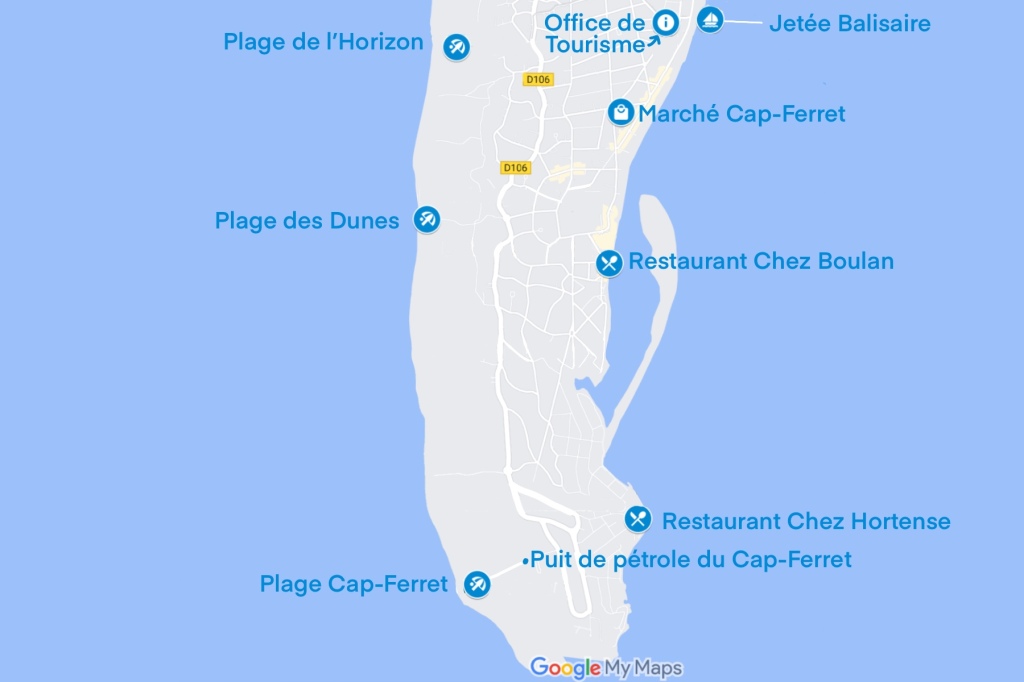
Click here for an online version of this map of the Cap-Ferret peninsula.









Accommodations
Accommodation in Cap-Ferret is extremely expensive and most have no air-conditioning. During the 5 day intense heat-wave in Bordeaux we travelled to Cap-Ferret every day to take advantage of the cooler beaches on the Atlantic. We looked at a few accommodations to spend the night but they were tiny, super expensive and really hot because no A/C. So we ended up returning to our air-conditioned apartment in Bordeaux at the end of each day (1.5 hr trip each way with train and ferry). If you must stay in Cap-Ferret try La Cabane de Pomme de Pin (no AC) or hotel-cotesable.com (AC but very expensive). Lege-capferret.com has more accommodations and for villas and very high-end accommodations try lecollectionist.com. You can also visit the Office du Tourisme in Cap-Ferret (map) and they will give you a list of private accommodations (Note: we tried this with no luck. Everything was booked and the ones that were available were awful).
3. La Route des Châteaux Médoc

We rented a car for a day to drive “La Route des Châteaux Médoc” (“Château” means “castle” but it also means a winery). This route is famous for its fairy-tale châteaux and world-class wineries but most of them do not offer drop-in visits so you have to make reservations well ahead of time if you want to do a wine-tasting. There are more than 60 wineries to choose from so it can be an overwhelming process trying to choose which ones to visit. To complicate matters, not every winery is open to the public or offers wine tastings. A visit to the Tourism Office in Bordeaux will help you determine which wineries are open to the public.
We narrowed our search by looking for a winery that does a tour, wine-tasting and picnic lunch. This really simplified our choice because I only found two: Château Lamothe-Bergeron and Château Paloumey. We decided to book at Château Lamothe-Bergeron (35eu/pp) and we were very happy that we did!





Apart from the magnificent châteaux, the Médoc wine route is not as scenic as the landscape in St. Emilion (read below). It’s very flat and some parts have an almost industrial feel to them. In addition, the roads are only two lanes so the drive can be very slow if congested or stuck behind a slow vehicle. However, the châteaux are GORGEOUS and well worth the trip.
Below is a list of the places we stopped at (click here for a Google map). The only winery that was open for a drop in wine-tasting was Château d’Agassac (it was also one of the most beautiful châteaux and the closest to Bordeaux). Apart from Châteaux Lamothe-Bergeron which we booked, all of the other châteaux were either closed to the public or did not offer drop-in wine-tastings. But we were happy to visit them anyways to admire their beauty and to take pictures.
- Chateau D’Agassac
- Chateau Palmer
- Château Margaux
- Chateau Malescasse
- Château Lamothe Bergeron
- Chateau Branaire-Ducru
- Chateau Beychevelle
- Chateau Ducru-Beaucaillou
- Chateau Latour
- Chateau Pichon-Baron
- Pauillac: Seaside town
- Saint-Estèphe: Tiny town, not much to it.
- Soulac-Sur-Mer: Really nice coastal beach town at the northern tip of Médoc. Well worth a visit.




4. St. Emilion
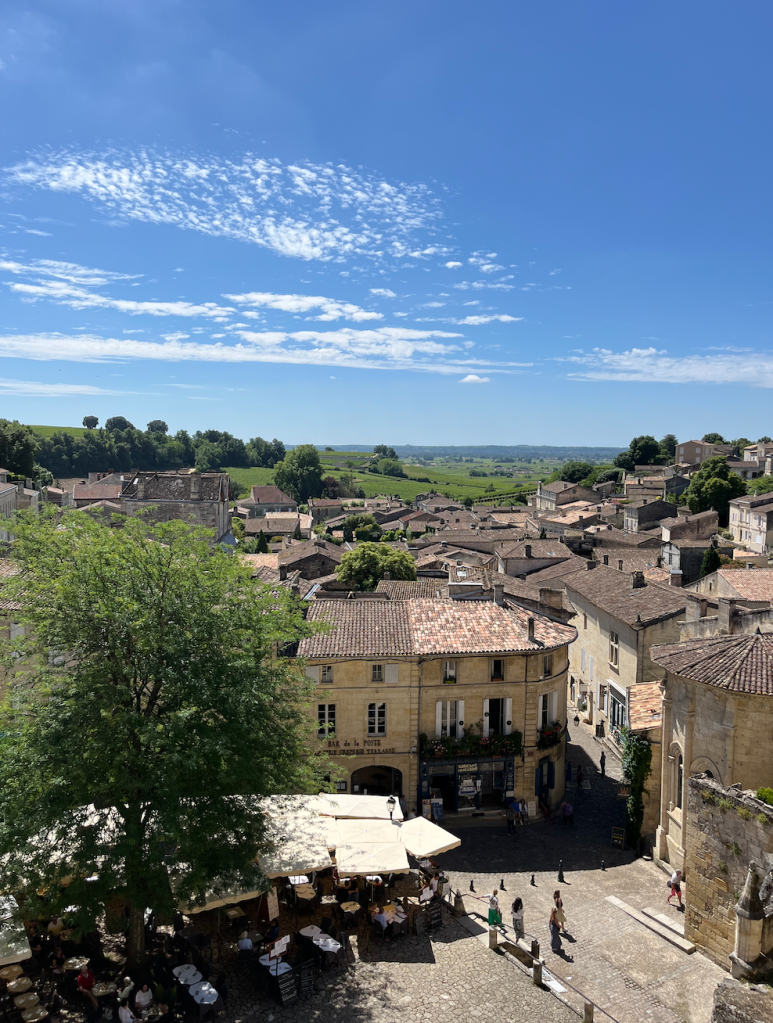
We loved the medieval city of St. Emilion for its beauty and for its reputation of high-quality Bordeaux wine. The area is absolutely gorgeous, with quiet country roads and rolling hills of vineyards stretching as far as the eye can see. Steve and I visited St. Emilion three times: twice on our own and then once with Lauren.
As in most popular French towns and cities, there is an Office de Tourisme right in town if you need any help organizing your visit. Click here for a map of places to visit in St. Emilion.
You can easily get to St. Emilion by train from Bordeaux (30 minutes) then a 30 minute uphill walk from the train station to the town. Bring bikes if you have them, or you can hire a tuk-tuk from the train station (or walk, if you have the energy!) Note: If you bike, lock your bikes at La Place du Marché, then explore the town on foot. La Place du Marché is also a great spot to get a coffee and admire L’Eglise de Monolithe de St. Emilion.
The first time we visited St. Emilion we explored the town with a vast number of shops, restaurants, cafés and wine-tasting stores, then we had lunch at the beautiful winery and restaurant L’Atelier de Candale (+33 5 57 24 15 45). Be sure to book ahead of time and ask for tables 404, 405, or 505 for the best vineyard view. It is a ten-minute bike ride from St. Emilion and a beautiful ride.

The second time we visited St. Emilion we booked a tour, wine-tasting and gourmet picnic lunch at Château Mangot, a small, family-owned winery, a 30-minute ride from St. Emilion. We loved this experience! Tel: 05 57 40 18 23 or email todeschini@chateaumangot.fr, 38eu/pp.

The third time in St. Emilion we booked a tour, wine-tasting and gourmet picnic lunch at Château Champion which is another small, family-owned winery, a 15 minute bike ride from St. Emilion. The tour and tasting was conducted by the château’s owner and matriarch, Mme Véronique Bourrigaud, who is passionate about her wines, super friendly and explained in detail the wine-making process from beginning to end (info@chateau-champion.com, 25eu/pp). Later in the day we booked a tour of the catacombs of L’Eglise de Monolithe de St. Emilion (12eu/pp) which was interesting but not a must-do, in our opinion. We also visited La Cloitre des Cordeliers which is a beautiful venue in town with shops, wine and restaurants.



5. Toulouse
We were excited to visit Toulouse as we had heard a lot of good things about it, but it was slightly disappointing for us. It was a long two hour train trip each way from Bordeaux which really is too long for a day trip. It has a great indoor market, Le Marché Victor Hugo, some stunning architecture and beautiful red buildings but we found it very chaotic with lots of car traffic and not too-many pedestrian-only streets. Maybe we were just tired of travelling when we went? Click here for a map and suggestions of what to see and do if you go.




More Bordeaux resources
Here are some resources to learn more about Bordeaux:
- bordeauxtravelguide.com
- lostinbordeaux.com
- Things to do in Bordeaux, France – the ultimate guide, by Lost-in-Bordeaux.
- @lost_in_bordeaux (Instagram)
- @quoifaireabordeaux (Instagram)
More train tips:
- Download the SNCF app and create an account. Add travel companion profile too for faster future purchases
- Tickets can be saved to Apple wallet
- Sometimes a conductor will ask to see your ticket but not always.
- On most trains your ticket is valid only for voyage you paid for. If you miss it or decide to go at a different time, you will have to buy a new ticket. Significant fines if you are caught with no ticket or the wrong ticket.
- If it’s a TER train, you can use the ticket any time during the same day for the same destination
- Get to the station early and look on the departures screen to find your « voie » (track). You might need to go underground if the track is on the other side. If you have heavy luggage or a bike and can’t manage the stairs, there is usually an elevator but it might be out of the way so give yourself lots of time. Note: sometimes the track is not displayed on the screen until last minute so be ready to run!
- It can be tricky finding the right track because it will be listed as the final destination of your train route and your stop may be before the last stop. Best way to find your train track is to look at the “Départs” screen and find the train that leaves exactly the same time as your train. This will likely be your train.
- Make sure you are on the right train when you board as there might be two trains scheduled on the same track and you might end up on the wrong train (it happened to us).
Have you been to Bordeaux? What are some of your favourite tips and places? Please add in the comments below, merci!
